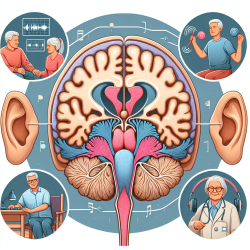Introduction
In today's digital age, the internet has become an integral part of our daily lives. While it offers numerous benefits, excessive use can lead to problematic internet use (PIU), which is often associated with co-occurring symptoms of depression and anxiety. A recent systematic review and meta-analysis published in the International Journal of Mental Health and Addiction explores the effectiveness of psychosocial interventions in mitigating these symptoms among individuals with PIU.
Understanding Problematic Internet Use
Problematic Internet Use is characterized by a lack of control over internet usage, leading to emotional instability and craving when access is restricted. It shares clinical similarities with substance and behavioral addictions, and studies have shown a strong association between PIU and mental health disorders like depression and anxiety.
The Role of Psychosocial Interventions
The meta-analysis included 15 studies that evaluated various psychosocial interventions, such as Cognitive Behavioral Therapy (CBT), positive psychology, and mindfulness, among others. The findings suggest that these interventions can effectively reduce PIU and its associated symptoms of depression and anxiety.
Key Findings
- Most studies reported a positive effect of psychosocial interventions on reducing PIU, depression, and anxiety symptoms.
- CBT emerged as a commonly used intervention, although its impact on reducing PIU symptoms was not significantly superior to other methods.
- Only one study demonstrated a robust effect in reducing anxiety symptoms, highlighting the need for further research.
Implications for Practitioners
For practitioners working with children and adolescents, integrating psychosocial interventions into therapy sessions can be beneficial. Given the prevalence of PIU among younger populations, tailored interventions that address both internet use and co-occurring mental health symptoms are crucial.
Practitioners are encouraged to consider a multi-faceted approach that includes CBT, positive psychology, and mindfulness techniques to enhance treatment outcomes. Further research is needed to explore the long-term effectiveness of these interventions and to identify the most impactful strategies for different age groups and demographics.
Conclusion
Psychosocial interventions show promise in reducing PIU and its associated symptoms of depression and anxiety. However, more research is needed to determine the most effective intervention strategies. Practitioners are encouraged to stay informed about emerging research and to consider incorporating evidence-based interventions into their practice to improve outcomes for individuals with PIU.
To read the original research paper, please follow this link: The Effect of Psychosocial Interventions for Reducing Co-occurring Symptoms of Depression and Anxiety in Individuals with Problematic Internet Use: A Systematic Review and Meta-analysis.










